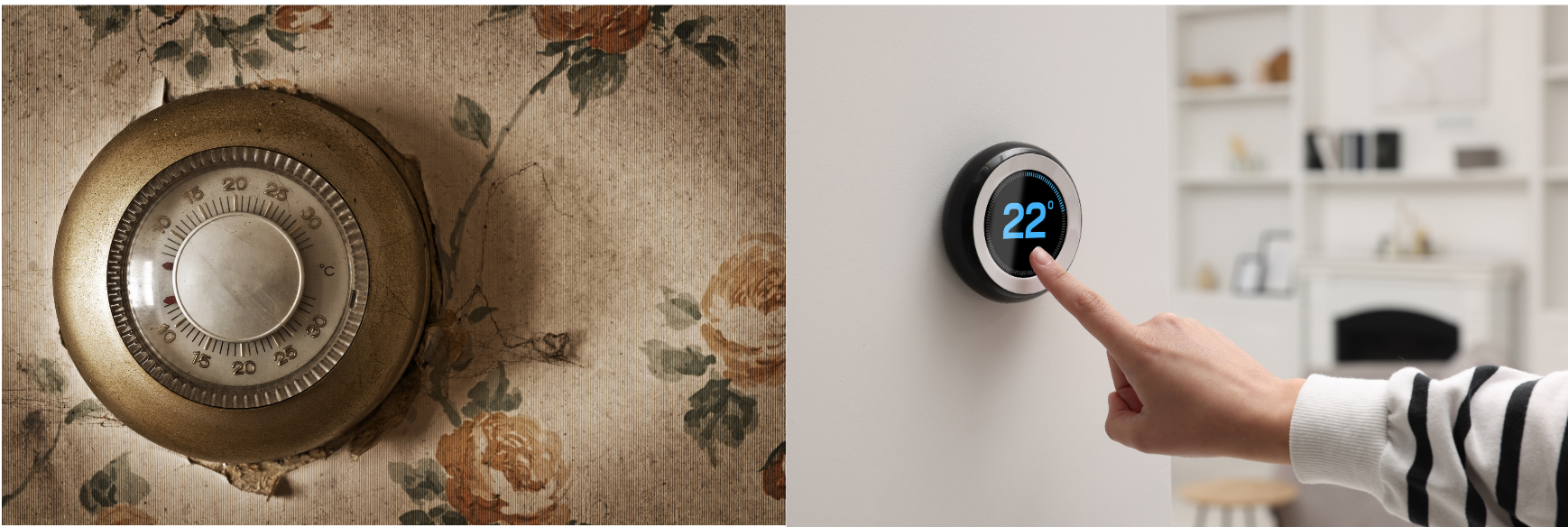Times they are a-changin’!
Times they are a-changin'!
Thermostat technology has come a long way since the early thermostats made almost 400 years ago!
Early thermostats relied on mercury’s expansion and contraction during heating and cooling, respectively, to open or close gates/valves to regulate heat. In the 1950s, the dial thermostat was introduced (below, left). These thermostats had a dial that could be turned to set the temperature. Inside the device, there was a bimetallic coil. When the user sets the temperature, that coil is turned to a particular angle. At the end of this coil, there is a glass vial of mercury with electrical contacts at the end. When the coil expands or contracts with temperature, the angle of the vial changes. If it gets past a certain user-set temperature, the mercury will flow from one side to the other and connect the contacts. Since mercury is a metal, electricity passes through to signal the furnace to turn on.

In the 1980s, digital thermostats started to appear on the market. They were often a bit more expensive than the traditional dial thermostats, but they were much more accurate. Digital thermostats continued to evolve and became much more popular when mercury thermostats were banned in the early 2000s due to environmental and health concerns.
In 2008, a company called Ecobee released the first smart, internet-connected thermostat. Other companies soon entered the market.